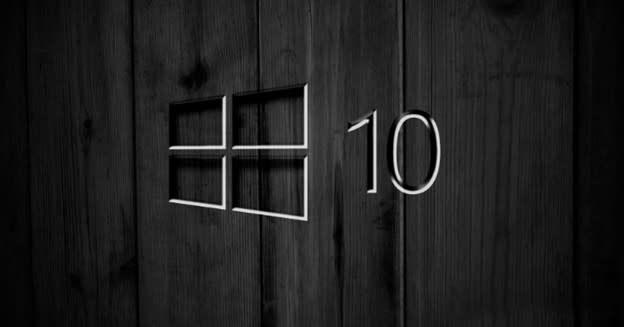Is Windows 10 too aggressive in suggesting updates?

Windows 10 Failed to Impress; even with the Anniversary Update
Personally, Windows 10 has never been my favorite operating platform. However, I did give it a try after Microsoft's persuasive attempts at rolling out the same to the PC users. While I would be sharing my experiences later in the post, right now I will be expressing my feelings about the invasive approach from Microsoft.
The notifications came in every possible format. While some suggested me to upgrade like others, some pop-ups guaranteed better firewalls and anti-phishing options. Just before the official termination of free rollout, I was bombarded with intimations— urging me to upgrade till the offer lasts. Although I was irritated, the 'Curiosity Gap' fooled me into installing the massive update.
According to me, Microsoft pushed the envelope a bit too much in its quest to achieve the target of one billion devices by the conclusion of 2018. This was the reason Windows 10 was suggested too aggressively to the users, even when it hardly made sense on basic PCs without touch support. Microsoft's user adoption strategy did trample on the pertinent aspects of computing i.e. privacy and user-choice.
There are many stories regarding people's year-long ordeal through these updates and one of them definitely involves me. Microsoft tried every possible trick to improve the Windows 10 user base but the approach disregarded many errands— on its way to conclusion.
Violating User-Choice
Microsoft's approach of installing system tray application was downright malicious. While the app could be removed, the company found its way around this loophole— bundling the same with varied security patches. I was personally thwarted when the Windows Update System was compromised and later Windows 10 was pushed as a recommendation— compelling users to install a brand new operating system with minimal knowledge. Finally, all hell broke loose when the same was offered along with the internet explorer, via the security patch.
I actually evaded these but fell for the action designed for May, 2016. The dialog box was changed, in terms of behavior. Apparently, on being prompted for the update, a declination using 'X' was presumed to be a consent by Microsoft. I ended up downloading the same and had to install as I didn't know a lot about the nature of the new OS and also didn't want to waste the already compromised bandwidth.
My Experience
To be clear, I upgraded in May 2016 and downgraded to Windows 8.1 after a month's usage. I faced connectivity issues and many features won't work on my machine— a mid-range HP Pavilion model.
Many features actually didn't work as expected. Frankly speaking, unless you own a Surface Pro or one of the Surface Books, there isn't a lot Windows 10 can offer as compared to its predecessors. This is simply on stylus-heavy OS. Ironically, these machines will automatically come with Windows 10 preinstalled— saving a lot of bandwidth and data.
Cortana wasn't the most interactive personal assistant on the planet. Apart from a random joke and the usual weather update, things looked far more convoluted for my liking. I hear that Cortana has been improved with the Anniversary Update but I am too scared to try and fail again.
The most infuriating aspect was how the 'Universal Windows Apps' behaved. It isn't a secret that Windows store is facing a shortage of good or rather great applications. Companies like PayPal, Amazon and Tumblr have already pulled out of Windows and are seen concentrating more on the likes of Apple and Google for making money. Streaming applications like Cinema box or Playbox and photo editing options like Picasa are best downloaded as EXEs and installed over the PC. Lately, the Windows app store has been infested with music and games which isn't the best option on-board. While most versions of Windows are affected by this problem, nobody wants to get the flagship operating system and go on facing issues.
I faced issues with OneDrive as things were pretty sorted with file placeholders on Windows 8.1. Changing to Windows 10 meant that OneDrive could only be accessed properly by venturing into the website. That meant poor sync over the machine and a hell lot of work.
Apart from adverts, I wasn't actually pleased by the Stat Menu. Moreover, I couldn't stop the updates even when I was on a metered connection. I had to change my settings and Windows would spare me of the freebies but the important ones still poured in.
Back to Square One
Things didn't work well with Windows 10 and I was forced to switch back to Windows 8.1. However, all wasn't bad with Windows 10 as I actually liked the task manager and the way it stacked up the list of updates, threats and everything that's important. The transition between Windows 7 and Windows 8.1 was actually good as I could get rid of the tiles.
Then again, Windows 10 kind of killed my Wi-Fi and I had a lot of trouble accessing my web.
Bottom Line
It seems things haven't changed drastically as Microsoft did confess that a few devices froze on being supplied with the Windows 10 Anniversary Update.
For individuals with minor PC needs, the free rollout has lived out its expectancy period. However, people using assistive technologies including cognitive issues, disabilities and impairments still qualify for the free upgrade.
If given a chance I would like to stay away from Windows 10 for the moment, unless Microsoft offers a more cohesive operating system with things properly stacked in place. Even if the company fixes everything with Windows 10, I might still persist with Windows 8.1 or even a downgraded Windows 7.
The reason being— Once Bitten, Twice Shy
